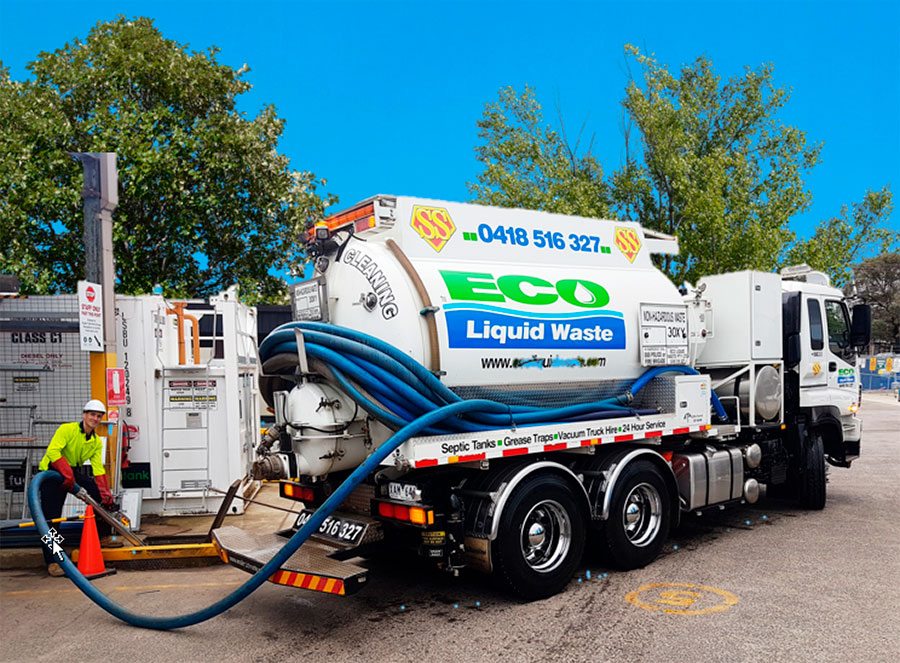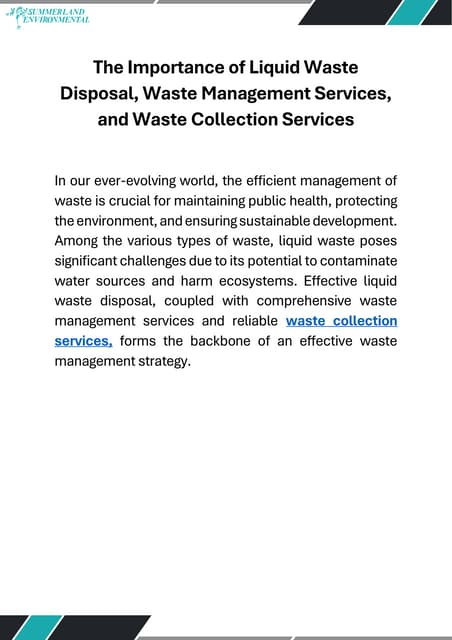9 Easy Facts About Reclaim Waste Shown
Table of ContentsThe Greatest Guide To Reclaim WasteThe Basic Principles Of Reclaim Waste 7 Simple Techniques For Reclaim WasteThe Best Guide To Reclaim WasteThe Reclaim Waste PDFsReclaim Waste Fundamentals Explained

Never put damaging compounds down sinks, commodes or stormwater drains Substances consisting of gas, oil, oil, chemicals and herbicides, and solvents such as paint pole dancers ought to not be put down sinks, toilets or stormwater drains. These substances are difficult to get rid of in the sewage therapy procedure and create contamination problems in our regional rivers.

Although fluid waste is a term that covers a wide variety of products, there's an excellent reason leaving its disposal to the specialists is suggested. Fluid waste is non-solid product that has no further use and should be dealt with and gotten rid of according to local, state and government laws.
Reclaim Waste Fundamentals Explained
Although examples of fluid waste can include wastewater, fats, oils or grease, made use of oil, fluids, solids, gases or sludges and unsafe house liquids, there are some that are considered to be a lot more dangerous than others when it involves the environment and the health of pets and people alike. It's because of this that each state and territory have actually stringent laws linked to liquid waste monitoring.
Liquid waste can be saved in holding containers or packaged in drums, intermediate mass containers or authorized tiny containers before either being treated or removed via outsourced vacuum trucks. Offered the nature of the materials, fluid waste can not enter the general waste stream and there are strict regulations on just how to dispose of it properly.
(https://boom-fruit-496.notion.site/Industrial-Wastewater-Treatment-The-Key-to-a-Cleaner-Greener-Future-13c9fdbb2e9380eca32fee3a79088ddf?pvs=4)Depending upon a decision of the level of danger, it might be required to remediate those websites. Furthermore, unsafe fluid chemical wastes are regulated waste and has to be tracked based on the state waste regulations. Under the chain of protection and obligations, proprietors are accountable and accountable for waste generated by an organization.
One of the core applications for superabsorbent polymers (SAPs) is fluid waste solidification. industrial wastewater treatment. SAPs are utilized by waste management professionals to avoid potentially unsafe fluids from entering waterways, groundwater aquifers, and various other sensitive atmospheres. Because fluids can swiftly carry pollutants into ecological receptors and possibly contribute to geotechnical failings, liquid wastes are usually restricted from disposal in landfills
Rumored Buzz on Reclaim Waste
Essentially, cost-free liquids are fluids that divide from the strong part of waste product. Fluid waste can include the following: HDD mud and cuttings Landfill leachate Wastewater therapy sludge & biosolids Dug up debris Oil and gas drill cuttings Settling fish pond filth Hydro Excavation slurry Coal burning residuals/ash Container bottom sludge Concrete grinding/polishing slurry Associated Short article: For a practical example of totally free liquids separating from waste product, take into consideration the following situation: A waste monitoring contractor loads a dump associate sludge from a wastewater treatment plant's oygenation container, during a routine upkeep event.
When the motorist gets here at the land fill, he notices water leaching from the sludge and pouring from the dump vehicle. The load was turned down by the garbage dump and the driver was compelled to throw away the waste as a liquid waste at a special this website facility, which raised the disposal fees tremendously.
We also require to be accountable for the appropriate disposal of our waste materials. It is not sufficient that we pay waste disposal business to take treatment of our rubbish.
Facts About Reclaim Waste Uncovered

Segregating your waste can start inside the home. Set apart dry and liquid waste as well as edible waste, naturally degradable and non-biodegradable products.
You can make use of old garbage can, pail, yard pot or old plastic drums. Drill 4 to 5 openings in the container so the air can distribute. Layer the bottom with dirt to soak up the wet waste. Begin the composting procedure. Layer the garden compost with damp and completely dry waste along with dirt to maintain a balance in between the damp and the dry.
What Does Reclaim Waste Do?
To promote faster decay, you can likewise add semi composted dirt to the compost. If you see the smell is ending up being too solid, include extra newspapers and paper waste or add more holes to the compost bin to maintain the balance of the waste materials.
We additionally need to be accountable for the proper disposal of our waste materials. It is not enough that we pay waste disposal companies to take treatment of our rubbish.
Our waste, our responsibility. Have you ever questioned what happens to your liquid waste after it's collected? Did you know that fluid waste can be reused?
Getting The Reclaim Waste To Work
Segregating your waste can begin inside the home. Segregate dry and fluid waste as well as edible waste, biodegradable and non-biodegradable products.
You can use old trash can, pail, garden pot or old plastic drums. Pierce 4 to five openings in the container so the air can flow. Layer all-time low with dirt to soak up the wet waste. Start the composting process. Layer the compost with wet and completely dry waste as well as dirt to keep a balance between the wet and the dry.
Cover the compost container. As soon as a week, add dirt in addition to the garden compost. To help with faster decomposition, you can likewise include semi composted soil to the compost. Preserve the compost. If you notice the odor is becoming also strong, add additional papers and paper waste or include more openings to the compost bin to keep the balance of the waste products.